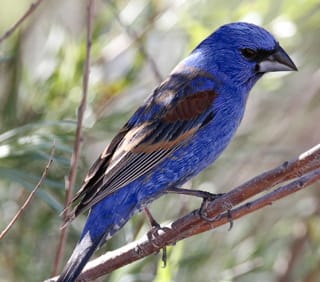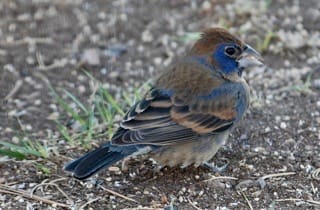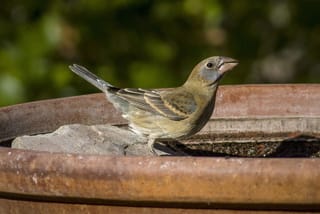Initially this guide displays common birds of all types that are flying right now in our area. Use the selectors below to view rare birds, view birds flying any time, restrict the output to a certain shape of bird, or search by name.
New Mexico is on the western edge of the Central Flyway which is one of the major migration pathways between north and south for birds traveling between breeding and wintering grounds along the Rocky Mountains. This has resulted in the state having an incredible diversity of birds with over 550 different species reported. A little more than half of this number are sighted annually on the Pajarito Plateau. Some of these birds are full-time residents, some migrate here for a few weeks or months, and other are only seen briefly as they pass through the region.
This guide features many of the birds known to frequent Los Alamos county by when they are likely to be seen in the area. You can get additional information on local birds by joining PEEC Birders or going to the eBird website. eBird also includes lists of rare bird sightings and birding hot spots.
Bird References
Birdweb
Cornell Lab of Ornithology
eBird
eNature
Institute for Bird Populations
National Audubon Society
New Mexico Ornithology Society
What Bird
xeno-canto
Subject Area Experts (all guides)
Steve Cary (butterflies)
Beth Cortright (insects)
Terry Foxx (invasive plants)
Leslie Hansen (mammals)
Richard Hansen (fish, mammals)
Dorothy Hoard (butterflies, trees)
Chick Keller (flowers, herbarium)
Shari Kelley (geology)
Kirt Kempter (geology)
Garth Tietjen (reptiles)
David Yeamans (birds)
Web Development and Content Management
Pat Bacha
Jennifer Macke
Graham Mark
Akkana Peck
Contact
Please contact us for local nature questions and sightings. We welcome comments, corrections, and additions to our guides.
For more information about local nature, please visit our Nature Blog or subscribe to PEEC This Week.
Make Selection
 Photo: male by Hari Viswanathan  Photo: non-breeding male by Jerry Oldenettel  Photo: female by Mouser Williams |  Blue GrosbeakBLGR (Passerina caerulea, Guiraca caerulea)Family: Cardinalidae (Cardinals, Grosbecks, and Allies) Size: 6 - 7.5 in (15 - 19 cm) Flies: May 01 - Sep 15 Morphology: breeding males are a rich blue color overall with a black face mask, chestnut wingbars, a black and silver beak, and two wingbars (upper one chestnut and lower one gray); nonbreeding males are patchy blue and brown with cinnamon wingbars; females are cinnamon-brown overall (darker on the head and paler underneath) with a bluish tail, and two wingbars; immatures tend to be chestnut brown with chestnut wingbars Status: native; locally common Food source: eats many different kinds of insects and spiders along with a variety of seeds Habitat: brushy moist pastures, thickets Typical location: Rio Grande, White Rock Canyon Blue Grosbeaks can be seen during spring and fall migration, though they can be hard to spot as they will often hide in thickets. They have a rich warbling song and a habit of twitching its tail sideways. These birds mostly forage on the ground or in low vegetation. Except when nesting, they usually forage in flocks. Males sing to defend the nesting territory while females build a compact open cup nest of twigs, weeds, etc. They will often add unusual materials like snakeskin which is thought to thwart predators. Cowbirds often lay eggs in the nests of grosbeaks. Info Photos Distribution Frequency |
